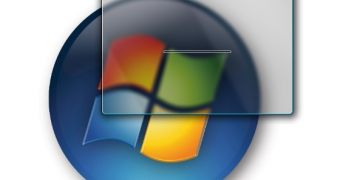Despite the fact that Windows 7 pre-beta build 6801 was showcased and subsequently released at the Professional Developers Conference at the end of the past month in Los Angeles, Microsoft still has some aces up its sleeve when it comes down to the next iteration of the Windows client. In this context, there are discrepancies between what PDC2008 attendees were presented and the actual Windows 7 pre-beta build 6801 bits. One such example is Aero Shake, a feature which was paraded in front of PDC2008 participants just to be locked in the actual build handed to them. At the bottom of this article you will be able to find a video of Aero Shake just to get an idea on how the Windows Taskbar has evolved.
Rafael Rivera has dug up Aero Shake from deep inside Windows 7 delivering Aero Peek and Jumplists to the users' fingertips. A hack is also available for enabling Aero Shake on build 6801 copies of Windows 7, opening up the feature outside of Redmond.
“In previous versions of Windows, we had multiple places for you to go and launch and switch between Windows and your apps on your PC. We had both the start menu for launching applications, a quick-launch area, and a task bar for switching Windows. On Windows 7, we've brought all those places together into one view where it's easy to find the applications you want and the windows you want to get to,” explained Julie Larson-Green, Corporate Vice President, Windows Experience in her keynote address during the conference.
Aero Shake indeed takes that Taskbar functionality to the next level. The feature permits users to shake applications in order to perform simple window minimize and maximize functions. In this context, Aero Share will first and foremost impact the user experience associated with touch computing, being designed to function on a basic gesture.
“Jump lists are the little menus down at the start menu on the task bar that show up when you right click on the start menu, and libraries are the way to bring together search and storage locations and multiple computers. The idea of both of these is to integrate deeply with the Windows desktop experience. These are opportunities for you and your software to really work seamlessly through and across and with Windows. It's an opportunity for you to differentiate your software, and an opportunity for you to participate in the personalization, the choice, and the control that Windows 7 promises end users,” Larson-Green added.

 14 DAY TRIAL //
14 DAY TRIAL //